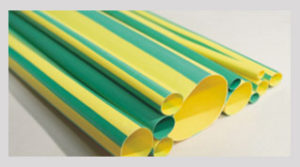
Heat shrink tubes and cold shrink tubes look similar from outside but their characteristics are different at large. Many people turning to use heat shrink tubes first time for the better installations often get confused between the two choices.
Don’t let the terms overlapping each other; the blog post will help you make the difference between the heat shrink and cold shrink tubes/sleeves clear and choose the right one for the particular application.
Heat Shrink Sleeves: Heat shrink tubing technology, introduced by Raychem Corporation in 1962, has a proven legacy of longevity and robustness lasting for more than 40 years. The long lasting life translates the benefits into cost saving. Heat shrink tube comes as the pre-stretched sleeve without a removable core.
The rust resistant polyolefin tube needs a heat source to shrink and get fit over the joint/cable/pipe. It becomes rigid once it is heated; therefore, it is preferred choice for excellent mechanical protection. It is a preferred choice for the industrial and commercial environments where chemical resistance is much of importance. It is not a good choice for the installations in high heat or humid environment. The more in common application areas for the heat shrink tubing are:
• Military logistics
• Space program
• Automobile
• Industrial infrastructure
• Boats and ships
• Network servers, desktop computers, Bluetooth devices ..
Cold Shrink Sleeves: The cold shrink sleeve is pre-expanded in the manufacturing unit to be fixed temporarily over a holdout. The holdout is taken during installation at site and the sleeve gets fit tightly over the joint/cable/pipe. The cold shrink tube is considered good when embrittlement resistance, weather resistance and UV resistance are the vital concerns. Its installation/fixing needs no special tool like the heat torch or training.
Highly recommended for indoor, outdoor and overhead uses, cold shrink tubing is the excellent watertight electrical insulation for all the solid dielectric insulated cable splices and wires rated up to 1000volts. It is a good choice for underground or underwater installations. The more in common application areas for the cold shrink tubing are:
• Coastal environments
• Refineries
• Altitude
• Vibration prone areas like railways and subways
• Dusty environments like wind farms and solar power generating plants
• Overhead joints protection
• Under the water environment
Heat shrink and cold shrink both the sleeves can be used for the variety of cabling applications like terminating, environmental seals and splicing on MV and LV cables. The ease of usage and environmental suitability should be the more important concern for selecting the best corrosion resistant insulator sleeve than the costing factor.